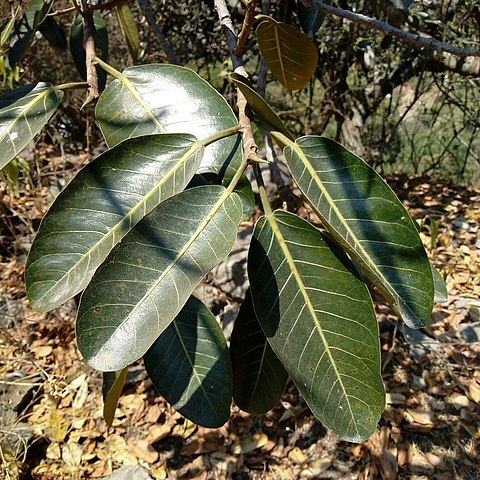Tree up to 20 m tall. Branchlets 5-15 mm thick, minutely puberulous to almost glabrous. Stipules 0.5-3 cm long, minutely puberulous to subsericeous, caducous; petiole 1-8 cm long, sparsely to densely minutely puberulous, sometimes hirtellous; blade (sub)coriaceous, elliptic to narrowly elliptic, or narrowly obovate, 6-28 x 4-12 cm, apex rounded to shortly acuminate, base rounded to subcordate, sometimes obtuse or subacute, margin entire, glabrous or sparsely puberulous above, puberulous to almost glabrous beneath; secondary veins 8-10(-15) pairs, reticulum beneath (almost) plane. Figs usually in pairs in the leaf axils, (sub)globose, (1-)1.5-2 cm in diam., minutely puberulous to glabrous, at maturity yellowish-green (with brown spots); peduncle 2-12 mm long; basal bracts 2, ca. 4.5 mm long; ostiole 2-2.5 mm in diam., surrounded by triangular or almost circular rim.
A fig. It is a strangler or a large tree. It can grow 30 m tall and be 4 m wide at the base due to buttresses and then with a trunk 8-0-150 cm wide. The buttressing roots can be 3 m tall. The leaf stalks are 2-5 cm long. The leaves are oval and 13-25 cm long by 7-10 cm wide. They are usually rounded at the base and taper to the tip. The figs are rounded and in pairs. They are 2-3 cm across. They are hairy and have red dots.


